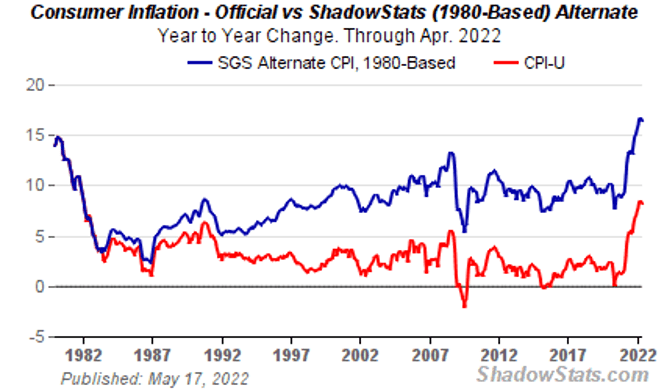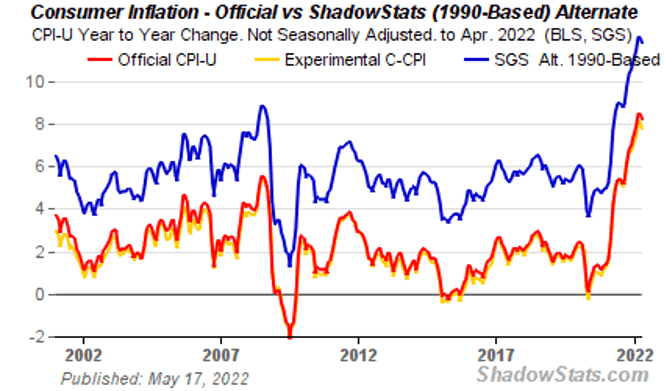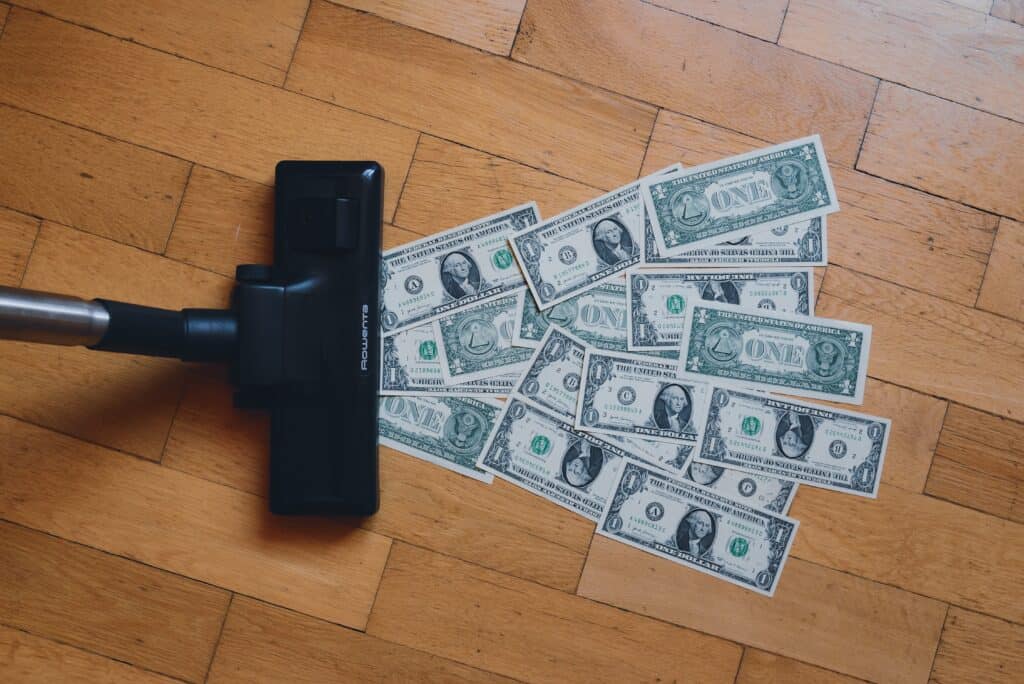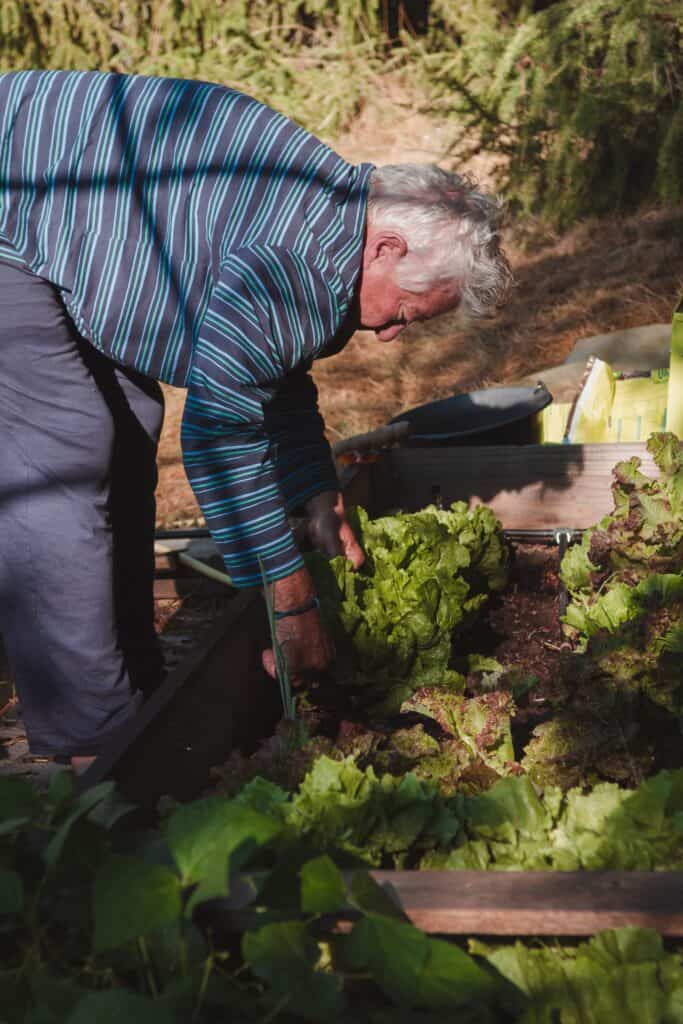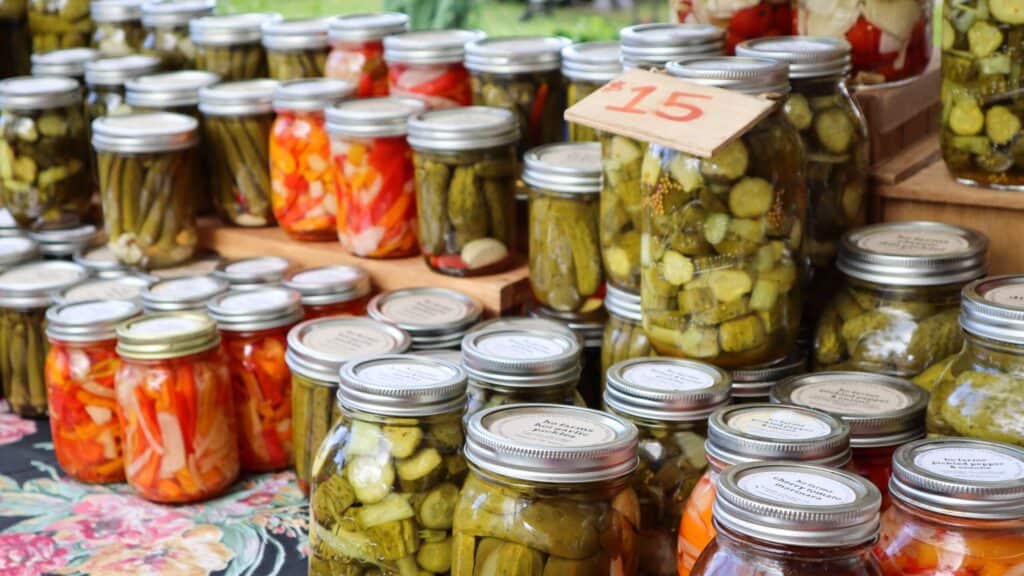The “official” rate of inflation and what people see when they shop locally are two different numbers. The United States is a big place. There is more than one factor that influences the cost of everyday items.
More isolated communities and towns often suffer the most. If it costs more to transport items to a more remote/rural area in good times, then it’s more trouble and expense if fuel prices rise along with the cost of the item itself.
To guard against inflation, it is important to understand what is causing it. It is easy to blame a single factor, but the reality is we are facing inflation driven by multiple factors. Any single factor discussed is challenging to solve, meaning we have a proper fight ahead of us in the second half of the Fourth Turning.
You are not helpless.
This article shows ways to fight on the home front and offers options for more serious life changes if you are at certain stages in life.
Calculating The Consumer Price Index
Sometimes people refer to 1970s or 80s era inflation in an attempt to assure people that today is not as bad. This is misleading. The official rate of inflation is now calculated differently. If you want to compare the modern CPI (Consumer Price Index) to past CPI, it is essential to use the same methodology. Shadowstats.com offers excellent charts that show a more realistic rate of inflation. I will tell you right now that the real picture is far worse than many realize. Based on the charts below, the rate of inflation reported by the government is likely 4-6% higher. Statistics are a great tool but they can definitely be manipulated to paint a picture that is more satisfactory to the entity calculating.
Causes of Inflation
Printing MoneyThere is a lot of money in circulation and the U.S. just keeps printing more. During Covid, many people received multiple stimulus checks. Printing currency and giving it away dilutes the purchasing power of the dollar. Of course, printing is nothing more than a catch phrase now. The money magically appeared in bank accounts. The digital dollar makes it even easier for governments to create currency out of thin air. Most of the money never made it to paper form.
Supply and Demand
An influx of stimulus money led to increased consumer spending. When demand is high and supplies are low, prices rise to balance out the supply and demand equation. It puts consumers in competition for goods, resulting in rising prices. Suddenly that extra $1,200 does not buy what it would have even two months ago.
Inflation Expectations and Loss of Confidence
When consumers expect inflation, they spend rather than save, thus leading to more rapid inflation. A collective loss of confidence in the purchasing power of any currency will lead to inflation. Current trends show a lot of spending and low or no savings. When you believe that your money will buy you less if you hang on to it, there is an incentive to spend it while it holds the maximum value. More spending leads to the supply and demand factor previously discussed.
Loss of confidence from international investors and other countries leads to business being conducted using a different currency. As the dollar gets dropped as the premier currency for conducting international business, inflation will proceed even faster.
As you can see, we are dealing with a viscous feedback loop that is incredibly hard to break. Doing so will require a lot of painful changes. As Strauss and Howe illustrate in the 4th Turning, there will be winners and losers.[caption id="attachment_530538" align="aligncenter" width="1024"] Photo by olieman.eth on Unsplash[/caption]
How Win in the 4th Turning
Reducing Grocery CostsThere are some tricks to finding the best prices on everyday items. While the tips I offer will help, do not assume you are going to cut costs below what paid six months or a year ago. This advice is meant to help as much as possible, but at this point in the inflationary cycle, there is only so much you can do.
Take Advantage of Older Stock at Stores
Large online and brick-and-mortar stores buy many well in advance. Some items that don’t move as fast, will still be good, but may have an older price. Let me give you a personal example: We buy 12-packs of Great Value Canned Chicken in 12.5 cans. We usually bought a mix of white and dark meat for just $19.95 per dozen. The last time I checked, the price skyrocketed to $35.95! At that point, I decided to not purchase, but then I had a thought. What is the price if I buy the same chicken in a 2- or 4-pack? It was just $8. So, I could buy four cans in the 12.5-ounce size. The only difference is that it was chunk chicken breast, not a mix of white and dark meat. No problem.
During regular non-inflationary times, you would not see this. White meat is always more expensive than dark. Why the difference in cost? The 4-pack of white meat chicken was produced and purchased when prices were lower. They listed it on the website for the price that offered the necessary store profit margin. The 12-packs that were produced at a lower cost and sold for $19.95 sold out and the new production run needed to be priced at $35.95 to offer a decent profit based on the inflated costs.
You often can find better deals simply by looking for the same thing in a different package size. Do the math and see what the difference is. In my case, I paid $5 more per 12-pack of chicken but I got the more valuable all white meat. Yeah, I paid more, but not the $16 more.
Learn to Value-Add at Home
I know that doing more is not what some people want to hear, but if you want to maintain a familiar quality of life, learning how to value-add is probably going to be how you do that. It can be as simple as learning how to cook meals from scratch instead of going out to eat.
Canning in-season produce is yet another way to add value at home.
[caption id=“attachment_530541” align=“aligncenter” width=“683”]
Photo by Pauline Bernard on Unsplash[/caption]What can you realistically produce at home?
It is very easy to take on a lot of projects and not get far with any of them. Setting realistic goals offers better results.
Gardening is something anyone is capable of on some level. During the Covid-19 pandemic, many people purchased grow lights and started producing salad greens, sprouts, and more in a small corner of their home. It really does not take much space if you plan the growing area well. Here are a few things to try out even if you think you do not have a lot of time for gardening.
- Sprouts in a jar
- Container gardening
- Micro greens in trays with lights
- Hanging baskets of cherry tomatoes or strawberries
Make your own convenience food. It’s healthier, and it costs less.
During the holidays, I take advantage of subsidized turkeys. At $0.49 per pound, it is cheap meat even if there are a lot of bones in the bird. After accounting for the bones, I am still only paying $1.00 a lb.
This year we used one turkey to make a meat filling for tamales. A single turkey yielded enough for about 100 tamales. We filled another 50 with cheese. This means we have around 20 tamale dinners in the freezer. All we have to do is heat them in the microwave with a wet paper towel over them and maybe throw together a side salad.
[caption id=“attachment_530543” align=“aligncenter” width=“1024”]
Photo by little plant on Unsplash[/caption]When I was pregnant, we made chicken and beef pot pies we could just throw in the oven for an hour for a quick filling meal.
Another option is to cut up meat and vegetables and freeze in quart or gallon size freezer bags for already prepped crock pot or stir-fry meals.
Oh, and another bonus is that by making a lot of food at once, you only trash your kitchen once rather than 15 or 20 times. That means less time on cleanup. I would rather wash a cutting board one time than dozens. (Saves on soap and water too.)
Buying bulk packs of meat and vegetables offers additional savings as well.
Order items in bulk, or split bulk orders with friends and family
It is usually less expensive to buy in bulk. Dry goods can always be repackaged using vacuum seal or mylar bags with oxygen or moisture absorbers. Purchasing bulk items with friends or family is another great option that allows everyone to get the best price.
Buy salvage groceries only for items you intend to use quickly
Outlet stores with damaged or salvage groceries are a great resource for saving money on items you intend to use within a month or two. Do not make the mistake of stockpiling a lot of foods that are close to or past their expiration date. Save money on items that you can use quickly and then find the best price you can on goods to stock up on for your long-term food stash.
Invest in hard assets or things that do not completely lose value over time
Certain items will always have some type of value. Land, for example, may go up and down in value over time, but one thing is for certain, it will always have at least some value or level of usefulness (unless something very extreme happens like nuclear contamination). That is a bit of an extreme example, but it shows that under all but the worst of circumstances, items like land holds some value.
Of course, land and houses are enormous investments that are beyond the reach of some.
I will use our herd of sheep as a smaller example.
We purchased some sheep years ago to start a small herd. The investment was low. I believe we paid around $100 per head. Our inputs were low. The grass replenishes itself with very little management. Basic healthcare needs are low. Over the years, while some sheep may lose a little value due to age, there are lambs born that are then sold for the current market price.
With livestock, the going price reflects the current input costs of farmers, their time, etc. Over the years, the sheep keep up with inflation. This year we sold sheep for more than double what the price was years ago. If we put the money we spent on our initial herd into a basic savings account or even one that featured a competitive rate of return, we would have lost a lot of purchasing power.
Think about what you can invest in that will hold or increase in value, and do it. When we emerge from the inflationary cycle, you will have some wealth to show for it, making it much more likely you find yourself on the winning side.[caption id="attachment_530546" align="aligncenter" width="1024"] Photo by Ricardo Gomez Angel on Unsplash[/caption]
Is relocation a lucrative option?
The cost of housing in many areas is skyrocketing. The reasons for this include:Urban Flight: Crime, drugs, homelessness, rising costs, Covid-19 lockdowns, etc., led many out of the cities. People with sufficient assets fled to areas seeking a better life for themselves and families. This flight led to an increased demand for properties. Sometimes, people moved from areas with higher costs of living to places with lower costs. The influx of out-of-state cash means sellers get more for a choice property. Where I live in western North Carolina, homes sell for well above asking price and they do not remain on the market for long. Those escaping cities buy some houses sight unseen.
Increased Building Costs and Restrictions: The cost of lumber and building materials is exorbitant. The 2x4 stud used for framing that cost less than $2.50 a few years ago is now $5 or more in my area. I noticed boards from my local Lowes featured a sticker proclaiming they were imported from Germany, of all places! There is something weird going on with the lumber industry when it makes sense to import European lumber.
Here, the newspapers report people are frustrated with the lack of affordable housing. When a developer attempts to build apartments, they are often met with resistance from locals that do not want to see the area over developed.
While I feel for those that have to rent, I think that people do not consider just how high the cost of building is for a developer and how long it takes for them to make any profit at all, despite charging the going “unaffordable” rate driven by an influx of new residents that can afford the higher costs.
This discord results in a tight housing market and continued high costs.
If your area is expensive, it may still be possible to find a place with lower cost of living
More people than ever are working from home. In many cases, this means the worker could live anywhere and keep the same job. The ability to live wherever can be used to your advantage sometimes. Let me give you an example from my own life. When I was 24, I moved from Ketchikan, Alaska, back to western North Carolina. My wage at the time was ok for Ketchikan, but in western North Carolina, my paycheck went a lot further. For a full year, I worked from home and made the same wage.
You may maintain your lifestyle or even live better by relocating to a less expensive area, at least until we get through this inflationary period if you are open to a major move. Of course, many people are doing just that, so some places are filling up fast and costs are rising as a result. If you can get into an area before this happens, you can get ahead. My home is near Asheville and that was not always a super expensive area. When my husband and I returned from Alaska, our land in NC was only valued at around 1/3 of what it is worth now. If you can find an up-and-coming place and get in early, you can come out ahead.
Relocating to a less expensive area is helpful if you are in a situation where uprooting your life doesn’t sound too overwhelming. Of course, younger people and those with no children may find relocation actually makes sense.
Would it make more sense for one person to work from home and offer childcare?
There are more opportunities than ever to work from home. In fact, a lot of jobs have transitioned from the office thanks to Covid-19 restrictions and the idea that employers realized it’s less expensive to allow employees to work from home than maintaining an office space.
If you are paying for childcare, it is worthwhile to examine what your financial situation would be like if you worked from home and eliminated childcare costs or at least reduce them a lot.
In a two-parent household with both working outside the home, it could easily make more sense for one person to stay at home. If you add up the costs and benefits, even a part-time job at home could be a better financial situation than paying for day care, after-school programs, a second car, and time and fuel costs spent commuting, etc.
As the mother of a 10-month-old, I completely understand that working full time while meeting my child’s needs is not realistic without some help. At the same time, I can work form home and make a living without needing childcare for 40 hours or more per week. Writing is more flexible than many jobs. I can work during play or nap times, and stop when my baby needs me.
Remember, when adding up what your job costs, include the following expenses:
- Maintaining a vehicle or the cost of public transport.
- Increased fuel costs.
- Length of commute and lunch times. Assume your job pays $25 per hour, you are making $200 before taxes. If you have to spend one hour each day getting to and from work, and take a one-hour lunch, that's 10 hours away from home each day. That means $20 per hour away from home you could be earning with a remote job.
- Costs of eating away from home. Few people pack a lunch when they work in town full of restaurant meals and drinks. but those add up to a lot more than if you are eating at home. Can you spend less than $10 a day eating lunch at a restaurant? If so, that's $200 per month.
- Childcare.
Inflation is a problem we must prepare to endure for an extended period. Finding realistic ways to reduce the impact it has on your life while maintaining a decent standard of living may seem challenging, but it is feasible for everyone to do on some level.
Adding value at home and reducing unnecessary costs are two of the more realistic options for the average person.
This is a companion discussion topic for the original entry at https://peakprosperity.com/overcoming-inflation-in-the-fourth-turning/
